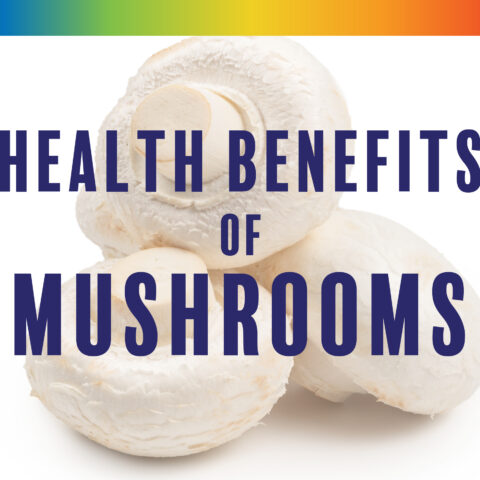The Benefits of The Paleo Diet®

Quite simply, The Paleo Diet® is the diet to which the human species is best adapted. In other words, when you eat The Paleo Diet, you are eating the optimal foods for your body, literally programmed into your DNA. [1-4]
This is the diet of our hunter-gatherer ancestors. It comprises the basic foods eaten by every human since our first appearance over a million years ago, until the invention of agriculture a mere 10,000 years ago [2, 3, 5-9]. Of course, many of the foods that ancestral man consumed no longer exist. Therefore, the modern Paleo Diet mimics the foods that we would have consumed in our historic past. It is as close as we can get to a diet unadulterated by modern agricultural methods, animal husbandry, or processed foods, elements that have only existed for a short amount of time relative to the span of human evolution.
While Dr. Loren Cordain may be considered the originator of The Paleo Diet, he likes to emphasize that he didn’t create it. [7] That job belonged to nature. Over the past three decades, Dr. Cordain, along with many of his colleagues from the fields of medicine, nutrition, and anthropology, such as Boyd Eaton and Stefan Lindeberg, simply uncovered the science that stands as the foundation of the diet to this day. [2, 3, 9-16]
When we compare The Paleo Diet to a modern Western diet, the differences are stark. A large portion of the foods typical to a Western diet have only been introduced in the past 100 to 200 years. This includes vegetable oils, refined sugar, and processed foods. (Refined flour only appeared after the invention of steel roller mills in the late 1800s.) In fact, 70% of the foods in the modern Western diet were only introduced within the past few generations. Because of how recent those changes have taken place, our bodies haven’t had ample time to evolve to properly digest these foods. [3, 4, 6, 7, 9-13, 17, 18]
However, on The Paleo Diet, you will feel empowered like never before as you eat copious amounts of nutrient-dense foods such as vegetables and fruits, lean meats and seafood, all the while eliminating inflammatory foods such as grains, dairy, refined sugars, refined oils, and processed foods. For a quick and easy guide for how to go Paleo, click here.
While other fad diets have come and gone, and new ones appear on the marketplace every few months, The Paleo Diet remains. It’s not just a lifestyle, but a commitment you will feel motivated every day to making part of your routine. That’s because it is based on decades of scientific research, and its fundamental principles are recognized by medical and health professionals who firmly believe in the supporting data. Going Paleo is an enlightening path to a reality-based approach to health and not a “quick fix.”
Benefits of The Paleo Diet
A vast and growing body of evidence strongly suggests The Paleo Diet has wide-reaching therapeutic effects both physically and emotionally, on metabolic diseases, autoimmune disorders, mental health, and much more. [19-47] In fact, since the diet is anti-inflammatory in nature, there are very few chronic illnesses or diseases that do not respond favorably to it.
Now, let’s take a closer look at the core principles and benefits of The Paleo Diet.
Feed your DNA
When you cut out processed foods and unnecessary additives, what’s left is unprocessed whole foods. Foods your body has evolved to eat and digest properly.
Improve nutrient density
You will consume the most nutrient-dense foods, including green leafy vegetables, blueberries, and salmon [click here for a complete chart comparing nutrient densities]. By contrast, the bulk of foods found in a typical Western diet—cereal grains, dairy products, and fatty feedlot meat—lack that depth of nutrition. Eliminating those items from your diet means you’ll need to replace those calories with something else. By the nature of The Paleo Diet, that means eating more foods densely packed with a variety of essential vitamins, minerals, and phytochemicals.
Forget macronutrients; focus on healthy foods
On The Paleo Diet you don’t focus on macronutrient ratios (i.e., how much protein versus carbohydrate you consume). This falls in line with our ancestral habits. Consider the range of foods our ancestors ate: Hunter-gatherer societies living near the equator consumed higher levels of carbohydrates, while those farther north consumed higher volumes of protein and fat. Likewise, our ancestral diet changed seasonally, so macronutrient ratios fluctuated throughout the year. The truth of the matter is that focusing on macronutrients runs counter to one of the main tenets of The Paleo Diet: a focus on eating healthy foods, and not how much carbohydrate you eat relative to protein or fat. That said, eating healthy natural foods leads to a diet that is higher in protein and lower in carbohydrates than the typical western diet.
Stop cravings
Eating the foods your body needs will greatly reduce your hunger signals. It does this by stabilizing fluctuations in insulin and, therefore, improving your glycemic control, a tremendous benefit for those with diabetes. Even though simple sugars are high in calories, they actually spike hunger signals creating a vicious cycle. On a Paleo Diet, you will consume a lower overall calorie count, while getting the nutrients your body needs. You will also eliminate spikes and dips in your energy levels. The benefit is threefold: you will remain more consistently energetic; you’ll eliminate daily cravings; and, finally, by eating foods that are lower in calories and higher in nutrients, you will more readily control weight.
Reduce dips in energy
You will eat foods with a lower glycemic load. Glycemic load is a measure of how much a meal will impact blood sugar and insulin levels. A Paleo Diet meal almost always has a low glycemic load.
Eat more natural plants foods
By the very nature of the diet, you will eat more foods in their raw form, and fewer processed foods. That means large amounts of vegetables, fruits, seeds, healthy lean meats, fish, eggs, and a sparing amount of nuts. Contrary to popular belief, The Paleo Diet is not based on the consumption of meat. That is a fallacy. In fact, while a Paleo Diet is not vegetarian, by volume the diet is primarily plant-based.
Improve key nutrient ratios
There are certain ratios that are extremely important to your health, and The Paleo Diet brings those ratios back into the balance our bodies were designed for. For example, the sodium-potassium ratio which in a Western diet typically sits at 10:1, and for optimum health should be around 1:2. Contrary to current belief, neither added salt nor sea salt are part of a healthy Paleo Diet. In fact, high sodium consumption relative to potassium contributes to a high acid load in the body, which has many negative health conditions. For example, research has shown that the high sodium content in many people’s diets contributes to osteoporosis. Another key ratio is the magnesium-calcium ratio and it likewise has a tremendous impact on your health. The Paleo Diet, by nature, keeps you in balance with regards to these crucial nutrients.
Eat the right ratios of fatty acids
For years, the USDA and nutritionists alike promoted a low-fat diet as healthy. It was believed that consuming fat—any fat—led to elevated cholesterol and ultimately heart disease. This belief has been mostly debunked and we now know was even based on bad research. What’s more important is the types of fats you eat. In particular, the ratio of omega-6 to omega-3 fatty acids. A Paleo Diet, based on fish, fresh lean meats, and healthy fruits and vegetables naturally provides an optimal ratio.
Improve your acid-base balance
A typical western diet is by nature acidic. The high sodium-to-potassium ratio is a contributor to this imbalance. An acidic diet can lead to inflammation and contributes to osteoporosis. This is one of the reasons why there is next to no research showing that calcium supplementation can help osteoporosis. Increasing potassium consumption (with vegetables) can.
Eliminate anti-nutrients
Grains such as wheat and quinoa contain many anti-nutrients such as saponins and lectins. These tiny molecules are extremely effective at evading your intestinal defense mechanisms, opening the tight junctions in your gut and making you very sick if you consume them raw. Cooking grains eliminates many but not all of these anti-nutrients and that causes an even bigger concern. Over time the small quantities of anti-nutrients cause chronic inflammation and lead to inflammatory diseases like autoimmune illness and cancer. A Paleo Diet eliminates foods high in these anti-nutrients.
Finally, enjoy a sense of freedom
As you become more informed about the benefits of The Paleo Diet, food and health will fill you with joy as you live in a natural state that stabilizes you physically and emotionally. Recapturing a sense of playfulness and confidence becomes the new normal as your new lifestyle rewards you daily. This is a lifestyle you will be able to embrace fully, as it’s proven, realistic, and incredibly powerful. Be patient, feel the drive toward an exciting new level of health and be comforted in knowing you are supported and accepted in this process. The science is powerfully compelling and the results are equally liberating.
References
1. Cordain, L., The nutritional characteristics of a contemporary diet based upon Paleolithic food groups. Journal of the American Nutraceutical Association, 2002. 5(5): p. 15-24.
2. Cordain, L., et al., Origins and evolution of the Western diet: health implications for the 21st century. Am J Clin Nutr, 2005. 81(2): p. 341-54.
3. Eaton, S.B. and M. Konner, Paleolithic nutrition. A consideration of its nature and current implications. N Engl J Med, 1985. 312(5): p. 283-9.
4. Eaton, S.B. and S.B. Eaton, 3rd, Paleolithic vs. modern diets–selected pathophysiological implications. Eur J Nutr, 2000. 39(2): p. 67-70.
5. Eaton, S.B., L. Cordain, and P.B. Sparling, Evolution, body composition, insulin receptor competition, and insulin resistance. Prev Med, 2009. 49(4): p. 283-5.
6. Cordain, L., et al., Macronutrient estimations in hunter-gatherer diets. Am J Clin Nutr, 2000. 72(6): p. 1589-92.
7. Cordain, L., The Paleo diet : lose weight and get healthy by eating the foods you were designed to eat. Rev. ed. 2011, Hoboken, N.J.: Wiley. xv, 266 p.
8. Konner, M. and S.B. Eaton, Paleolithic nutrition: twenty-five years later. Nutr Clin Pract, 2010. 25(6): p. 594-602.
9. Eaton, S.B., M. Konner, and M. Shostak, Stone agers in the fast lane: chronic degenerative diseases in evolutionary perspective. Am J Med, 1988. 84(4): p. 739-49.
10. Cordain, L., et al., Acne vulgaris: a disease of Western civilization. Arch Dermatol, 2002. 138(12): p. 1584-90.
11. O’Keefe, J.H., Jr. and L. Cordain, Cardiovascular disease resulting from a diet and lifestyle at odds with our Paleolithic genome: how to become a 21st-century hunter-gatherer. Mayo Clin Proc, 2004. 79(1): p. 101-8.
12. Frassetto, L., et al., Diet, evolution and aging – The pathophysiologic effects of the post-agricultural inversion of the potassium-to-sodium and base-to-chloride ratios in the human diet. European Journal of Nutrition, 2001. 40(5): p. 200-213.
13. Eaton, S.B., M.J. Konner, and L. Cordain, Diet-dependent acid load, Paleolithic [corrected] nutrition, and evolutionary health promotion. Am J Clin Nutr, 2010. 91(2): p. 295-7.
14. Cordain, L., et al., An evolutionary analysis of the aetiology and pathogenesis of juvenile-onset myopia. Acta Ophthalmologica Scandinavica, 2002. 80(2): p. 125-135.
15. Cordain, L., B.A. Watkins, and N.J. Mann, Fatty acid composition and energy density of foods available to African hominids. Evolutionary implications for human brain development. World Rev Nutr Diet, 2001. 90: p. 144-61.
16. Cordain, L., et al., The paradoxical nature of hunter-gatherer diets: meat-based, yet non-atherogenic. Eur J Clin Nutr, 2002. 56 Suppl 1: p. S42-52.
17. Cordain, L., Cereal grains: humanity’s double-edged sword. World Rev Nutr Diet, 1999. 84: p. 19-73.
18. Cordain, L., M.R. Eades, and M.D. Eades, Hyperinsulinemic diseases of civilization: more than just Syndrome X. Comparative Biochemistry and Physiology a-Molecular & Integrative Physiology, 2003. 136(1): p. 95-112.
19. Lindeberg, S., et al., A Palaeolithic diet improves glucose tolerance more than a Mediterranean-like diet in individuals with ischaemic heart disease. Diabetologia, 2007. 50(9): p. 1795-1807.
20. Jonsson, T., et al., Beneficial effects of a Paleolithic diet on cardiovascular risk factors in type 2 diabetes: a randomized cross-over pilot study. Cardiovasc Diabetol, 2009. 8: p. 35.
21. Klonoff, D.C., The beneficial effects of a Paleolithic diet on type 2 diabetes and other risk factors for cardiovascular disease. J Diabetes Sci Technol, 2009. 3(6): p. 1229-32.
22. Jonsson, T., et al., A paleolithic diet is more satiating per calorie than a mediterranean-like diet in individuals with ischemic heart disease. Nutr Metab (Lond), 2010. 7: p. 85.
23. Jonsson, T., et al., Subjective satiety and other experiences of a Paleolithic diet compared to a diabetes diet in patients with type 2 diabetes. Nutr J, 2013. 12: p. 105.
24. Ryberg, M., et al., A Palaeolithic-type diet causes strong tissue-specific effects on ectopic fat deposition in obese postmenopausal women. J Intern Med, 2013. 274(1): p. 67-76.
25. Boers, I., et al., Favourable effects of consuming a Palaeolithic-type diet on characteristics of the metabolic syndrome: a randomized controlled pilot-study. Lipids Health Dis, 2014. 13: p. 160.
26. Mellberg, C., et al., Long-term effects of a Palaeolithic-type diet in obese postmenopausal women: a 2-year randomized trial. Eur J Clin Nutr, 2014. 68(3): p. 350-7.
27. Talreja, D., et al., Impact of a Paleolithic Diet on Modifiable Cardiovascular Risk Factors. Journal of Clinical Lipidology, 2014. 8(3): p. 341.
28. Whalen, K.A., et al., Paleolithic and Mediterranean diet pattern scores and risk of incident, sporadic colorectal adenomas. Am J Epidemiol, 2014. 180(11): p. 1088-97.
29. Bligh, H.F., et al., Plant-rich mixed meals based on Palaeolithic diet principles have a dramatic impact on incretin, peptide YY and satiety response, but show little effect on glucose and insulin homeostasis: an acute-effects randomised study. Br J Nutr, 2015. 113(4): p. 574-84.
30. Frassetto, L.A., et al., Metabolic and physiologic improvements from consuming a paleolithic, hunter-gatherer type diet. Eur J Clin Nutr, 2015. 69(12): p. 1376.
31. Manheimer, E.W., et al., Paleolithic nutrition for metabolic syndrome: systematic review and meta-analysis. Am J Clin Nutr, 2015. 102(4): p. 922-32.
32. Pastore, R.L., J.T. Brooks, and J.W. Carbone, Paleolithic nutrition improves plasma lipid concentrations of hypercholesterolemic adults to a greater extent than traditional heart-healthy dietary recommendations. Nutr Res, 2015. 35(6): p. 474-9.
33. Dolan C, C.A., Davies N, Markofski M. , Effects of an 8-week Paleo dietary intervention on inflammatory cytokines, in American Physiological Society Conference, Inflammation, Immunity and Cardiovascular Disease. 2016: Westminster, CO. p. pp 40-41.
34. Fontes-Villalba, M., et al., Palaeolithic diet decreases fasting plasma leptin concentrations more than a diabetes diet in patients with type 2 diabetes: a randomised cross-over trial. Cardiovasc Diabetol, 2016. 15: p. 80.
35. Talreja, D., et al., CRT-800.00 An Investigation of Plant-based, Mediterranean, Paleolithic, and Dash Diets. 2016. 9(4 Supplement): p. S61.
36. Whalen, K.A., et al., Paleolithic and Mediterranean Diet Pattern Scores Are Inversely Associated with Biomarkers of Inflammation and Oxidative Balance in Adults. J Nutr, 2016. 146(6): p. 1217-26.
37. Afifi, L., et al., Dietary Behaviors in Psoriasis: Patient-Reported Outcomes from a U.S. National Survey. Dermatol Ther (Heidelb), 2017. 7(2): p. 227-242.
38. Anton, S.D., et al., Effects of Popular Diets without Specific Calorie Targets on Weight Loss Outcomes: Systematic Review of Findings from Clinical Trials. Nutrients, 2017. 9(8).
39. Blomquist, C., et al., Attenuated Low-Grade Inflammation Following Long-Term Dietary Intervention in Postmenopausal Women with Obesity. Obesity (Silver Spring), 2017. 25(5): p. 892-900.
40. Irish, A.K., et al., Randomized control trial evaluation of a modified Paleolithic dietary intervention in the treatment of relapsing-remitting multiple sclerosis: a pilot study. Degener Neurol Neuromuscul Dis, 2017. 7: p. 1-18.
41. Lee, J.E., et al., A Multimodal, Nonpharmacologic Intervention Improves Mood and Cognitive Function in People with Multiple Sclerosis. J Am Coll Nutr, 2017. 36(3): p. 150-168.
42. Otten, J., et al., Benefits of a Paleolithic diet with and without supervised exercise on fat mass, insulin sensitivity, and glycemic control: a randomized controlled trial in individuals with type 2 diabetes. Diabetes Metab Res Rev, 2017. 33(1).
43. Stomby, A., et al., A Paleolithic Diet with and without Combined Aerobic and Resistance Exercise Increases Functional Brain Responses and Hippocampal Volume in Subjects with Type 2 Diabetes. Front Aging Neurosci, 2017. 9: p. 391.
44. Blomquist, C., et al., Decreased lipogenesis-promoting factors in adipose tissue in postmenopausal women with overweight on a Paleolithic-type diet. Eur J Nutr, 2018. 57(8): p. 2877-2886.
45. Genoni, A., et al., A Paleolithic diet lowers resistant starch intake but does not affect serum trimethylamine-N-oxide concentrations in healthy women. Br J Nutr, 2018: p. 1-14.
46. Otten, J., et al., A heterogeneous response of liver and skeletal muscle fat to the combination of a Paleolithic diet and exercise in obese individuals with type 2 diabetes: a randomised controlled trial. Diabetologia, 2018. 61(7): p. 1548-1559.
47. Wahls, T., et al., Dietary approaches to treat MS-related fatigue: comparing the modified Paleolithic (Wahls Elimination) and low saturated fat (Swank) diets on perceived fatigue in persons with relapsing-remitting multiple sclerosis: study protocol for a randomized controlled trial. Trials, 2018. 19(1): p. 309.
The Paleo Diet Team
The Paleo Diet® team consists of a group of scientists, journalists, experts, and recipe creators who stay at the forefront of nutrition science.
More About The Author




